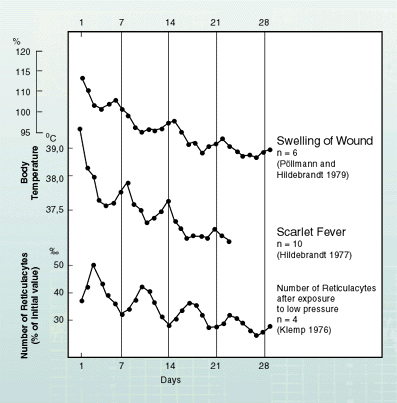The reactive periods occurring in the long wave field of the spectrum are of particular practical-medical importance, especially the approx. 7-day (so-called circaseptanes) periods, for which there are some examples in illustration 24. The local healing of the wound, e.g., having regard to the swelling of the wound, runs in circaseptane periods which subside softly. Such a reactive period can also be observed by the course of temperature in infectious diseases with a good tendency of self-healing, as e.g. scarlet fever.
The same applies for the compensatory blood-formation reaction after bleeding or lack of oxygen which can be observed in the course of the number of newly formed red blood corpuscles. It must be added that such a circaseptane reactive periodic may also be triggered by therapeutic strains of stimulus to introduce healing processes, whose temporal structure with the frequency ratio of 4:1 is therefore harmonically connected to the lunar cycle (literature translation see HILDEBRANDT and BRANDT-REGES 1992).

